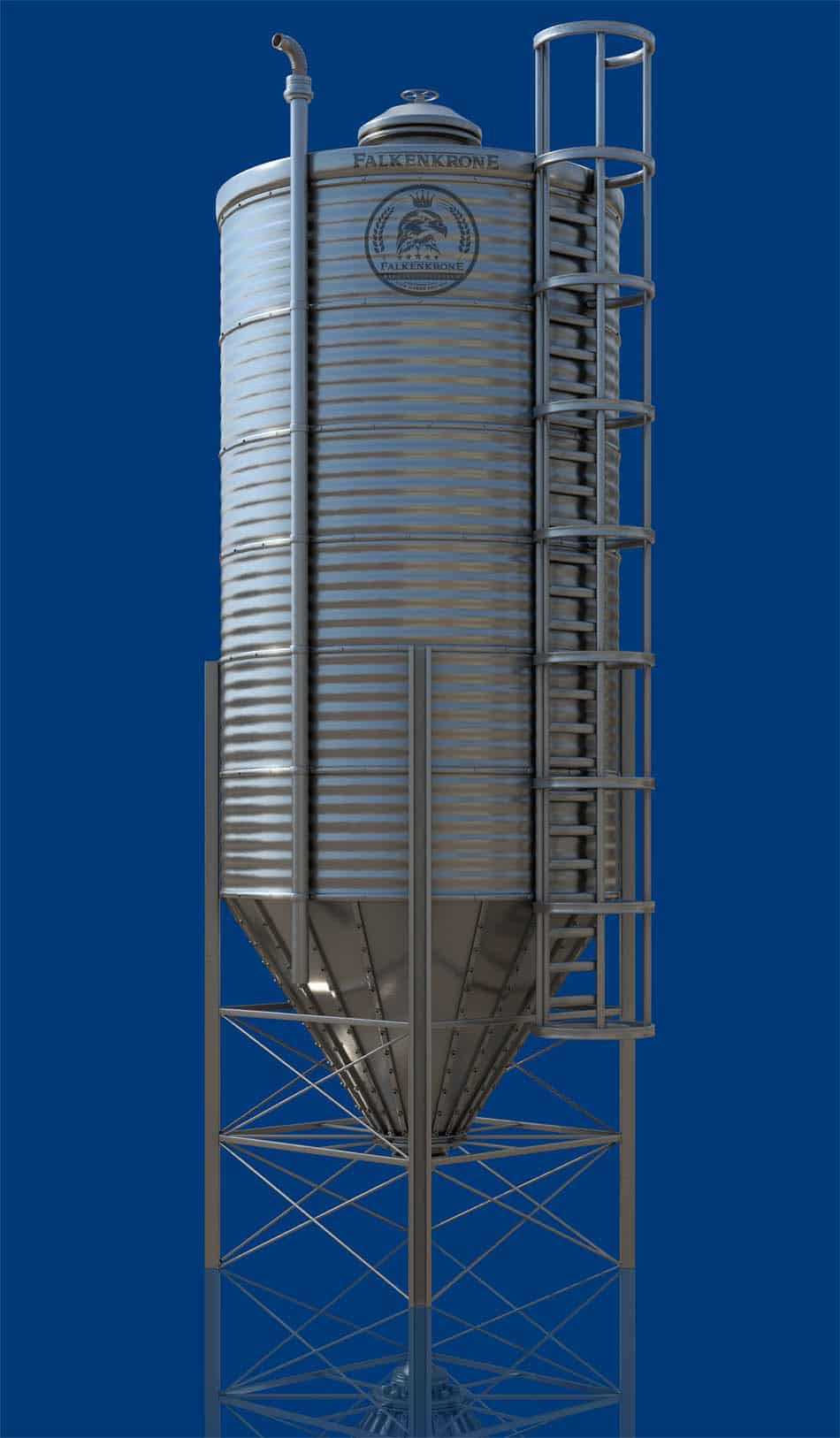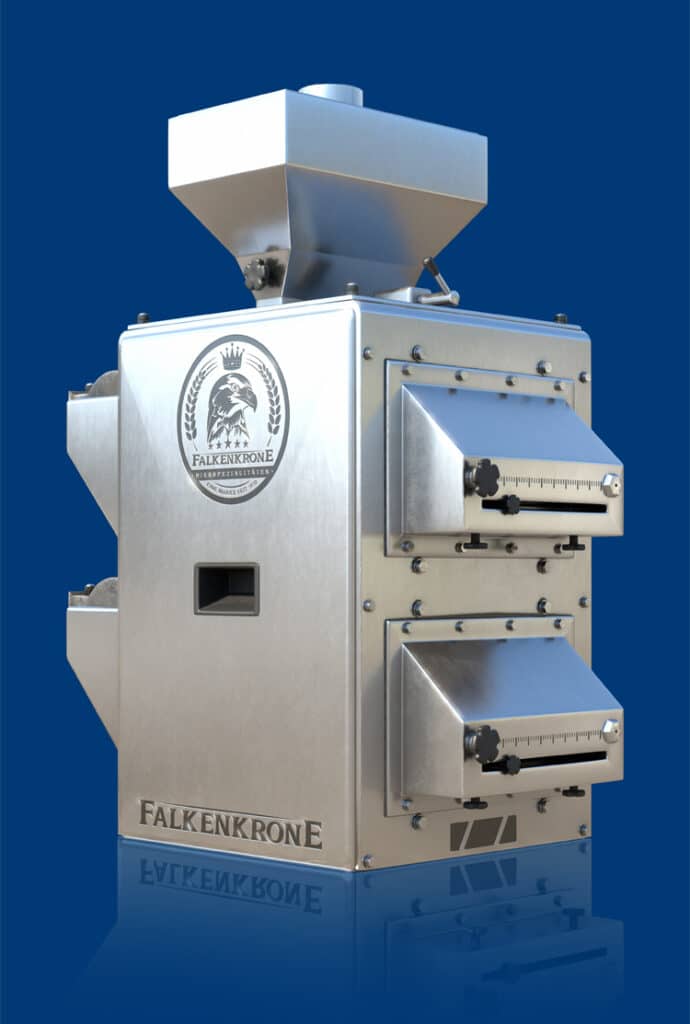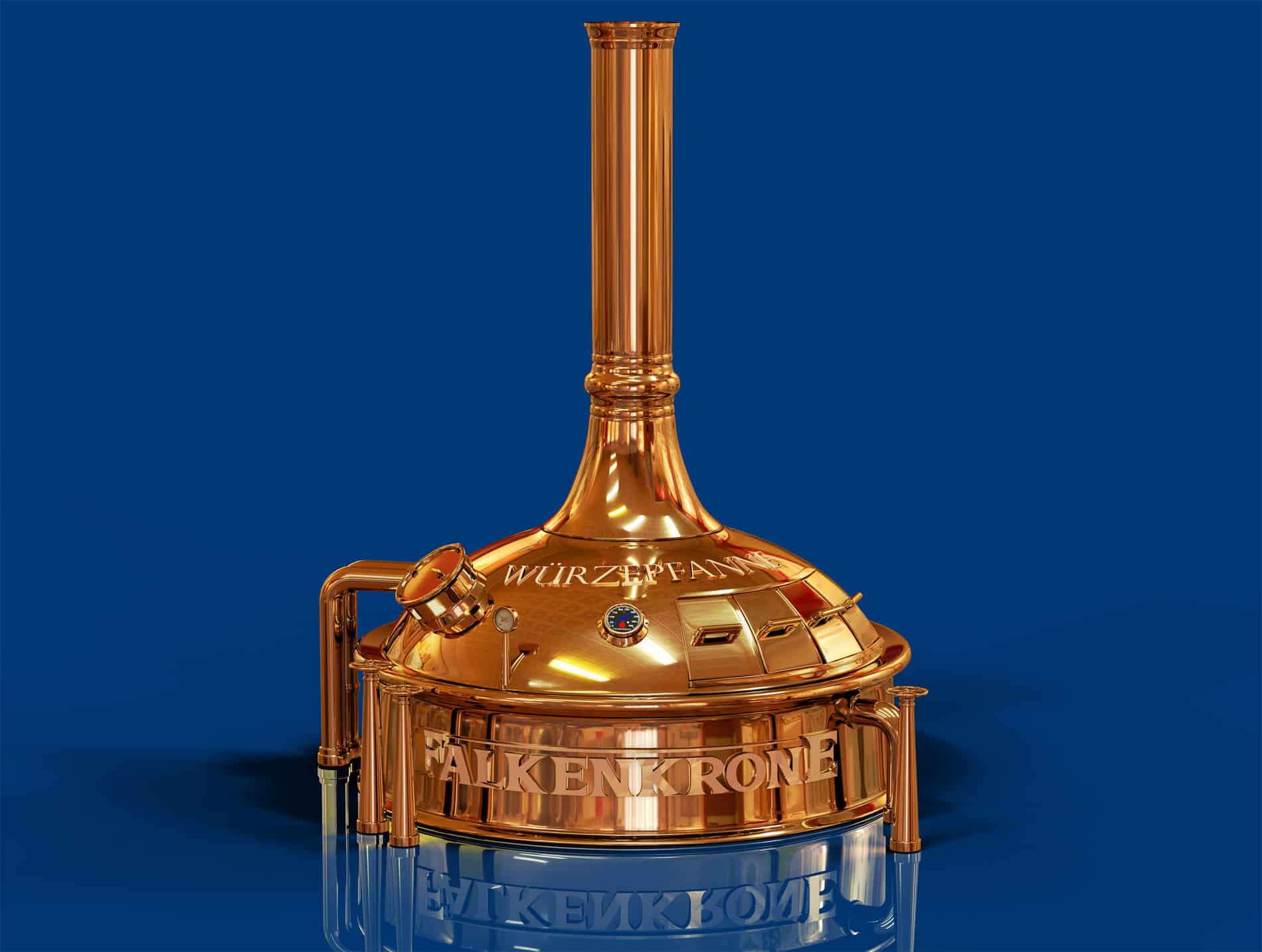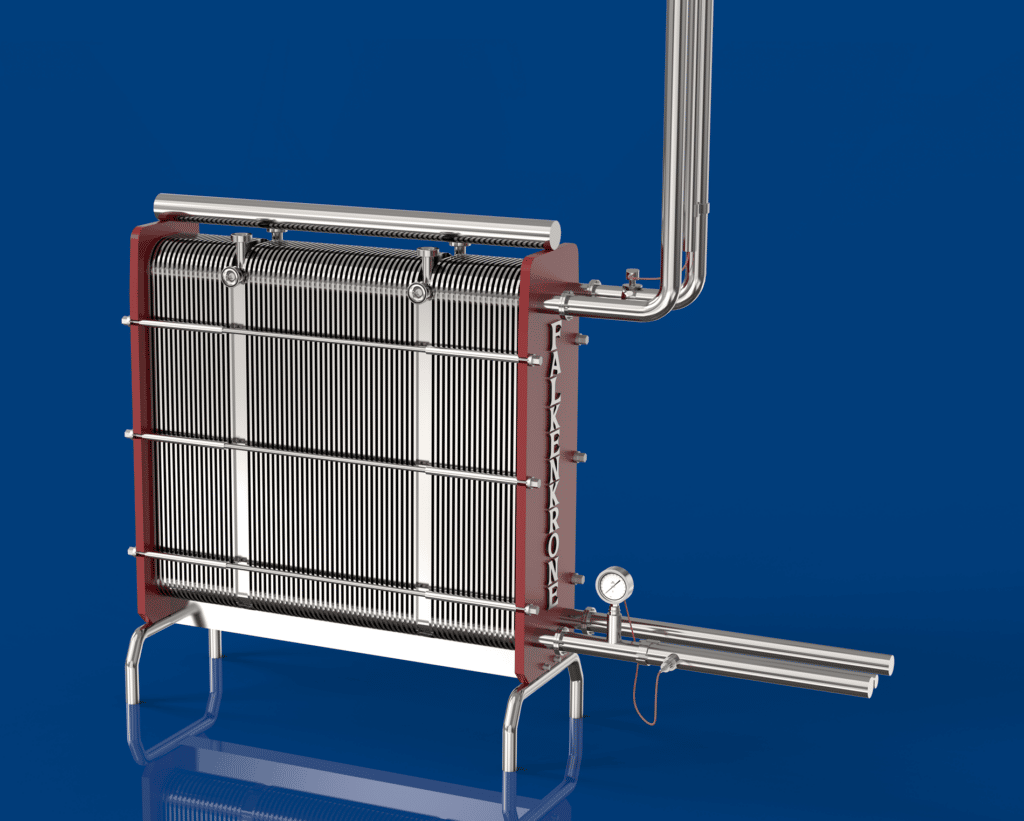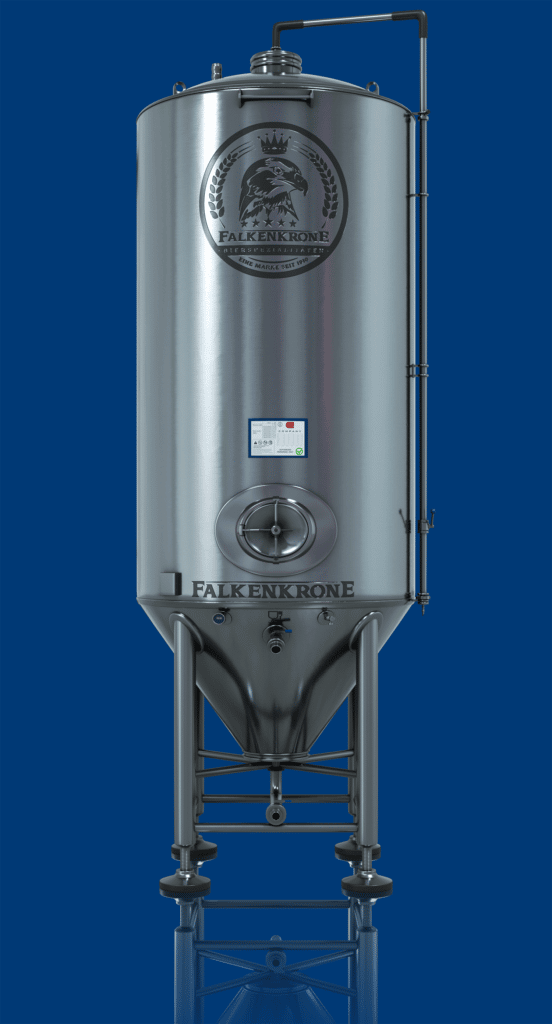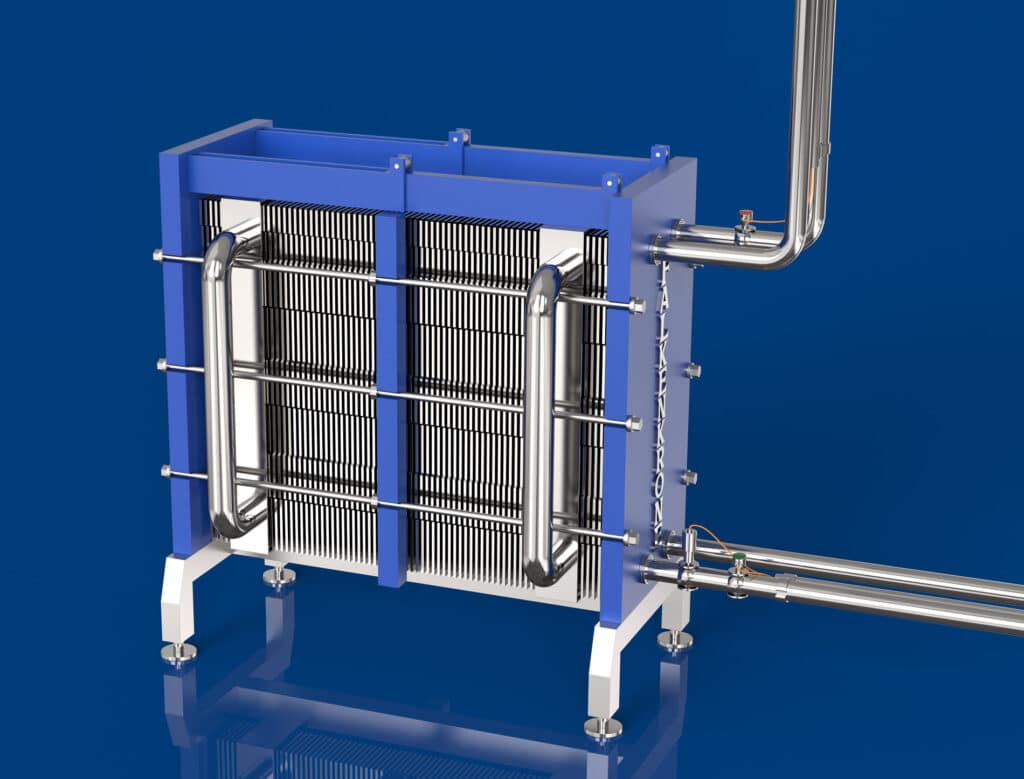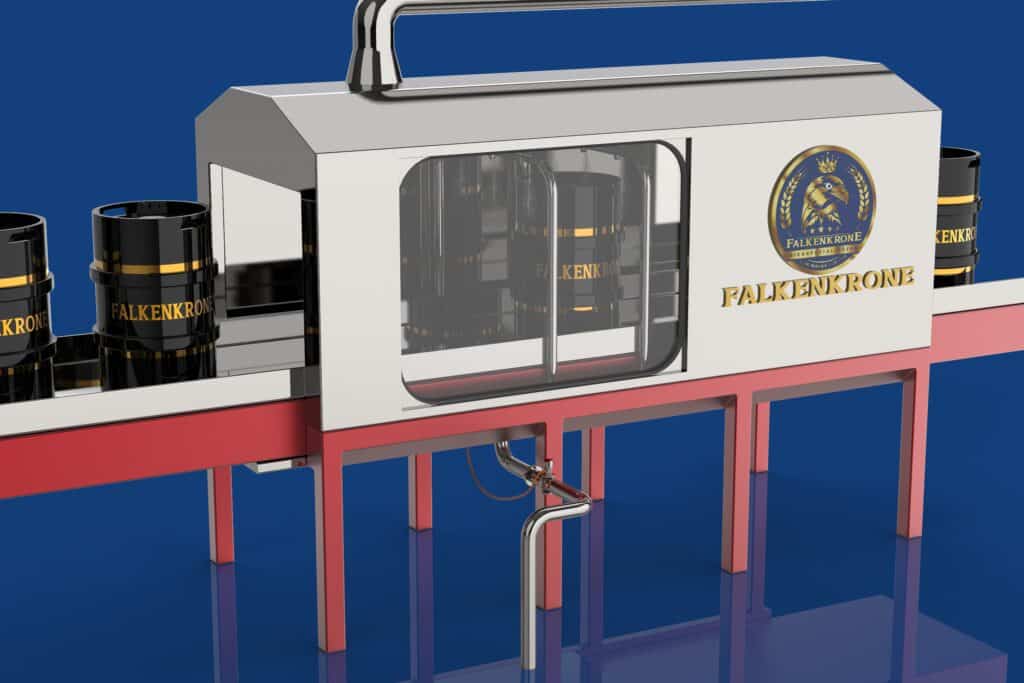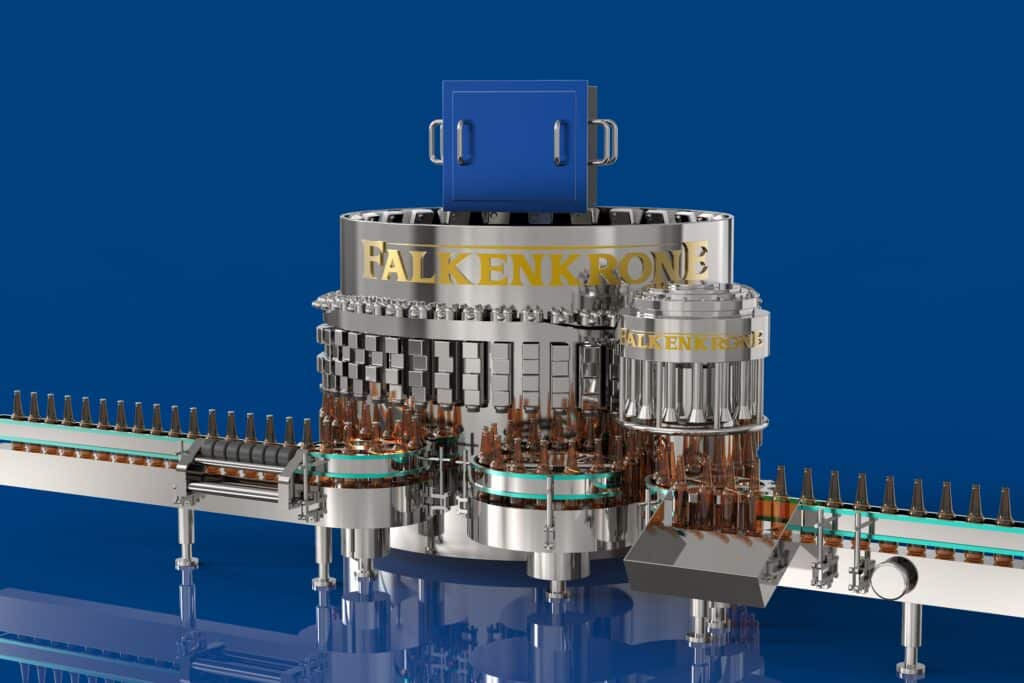Falkenkrone
BREW PROCESS

1st step is malting / malt silo
The first step in beer production is malting. Of course, everything starts in the malt silo.
Wheat and barley malt is stored here separately according to variety and origin.
This is because before the malt required for the brewing process goes into the grist mill or is conveyed for mashing, it is stored in one or more large malt silos. First, the fresh barley or wheat is soaked and made to germinate in the so-called germination boxes. In the process, the enzymes (amylase) required for starch breakdown are formed in the grain.
The germination process is interrupted at the optimum stage by drying (kilning).
The green malt is gently dried at about 80° Celsius and tastes slightly sweet after drying. The malt sugar later serves as food for the yeast cultures that form the alcohol.
The malt is stored in the so-called malt silos under constant control until the brewing process begins.
2nd step is milling / grist mill
The second step in the brewing process is milling with a grist mill. A distinction is made between different types of grist mills:
- According to the number of rollers used in the grist mill.
- According to grist mills with or without sifting.
- After wetting the malt in wet and dry grist mills.
The finished malt is crushed or ground in a grist mill, similar to the production of flour, so that it can dissolve better in water. It is important that the husks of the grains remain intact. They serve as a filter layer during the lautering process. Grist mills produce various grades of grist with different degrees of fineness: husks, coarse semolina, fine semolina, semolina flour and powdered flour, etc.
3rd step is mashing / mash pan
4th step is lautering / lauter tun
5th step is wort boiling / wort kettle
The fifth step in the brewing process is the wort boiling in the wort kettle where it gets really hot.
During wort boiling, the beer, as the name suggests, gets its certain spiciness and unique taste. Because even if the beer already has a sugar content after mashing and lautering, there are still small microorganisms in the mixture that would interfere with the enjoyment of the beer.
In this process, noble aroma hops and bitter hops in the form of pellets or extract are added via the hop dosing system and boiled along. The largest hop-growing regions are Tettnang in Baden-Württemberg and Hallertau in Bavaria. At 2,400 km², Hallertau is the largest contiguous hop-growing region in the world. Around 80% of the German hops and around 30% of the hops processed worldwide are produced here in top quality.
In addition, the hops have a sterile effect and very long shelf life, causing the extinction of bacteria. This allows the goodness from the hops, such as the stabilizing, bittering alpha acid and the pretty essential oils, to be released.
The hops are added in portions at different times during the wort boil. The taste of the beer depends on the variety and amount of hops, the more hops, the more tart or bitter the beer. Evaporation of the water concentrates the wort to the specific original wort, the malt enzymes are inactivated and tannins, protein and hop components then form the curd at the end.
6th step is wort clarification / whirlpool
The sixth step in the brewing process is wort clarification in the whirlpool. In the whirlpool method, very vigorous stirring of the hot wort separates the suspended solids (protein breakage and hops) from the wort in a simple physical way.
In this process, the wort is introduced tangentially into the whirlpool (formerly cooling vessel) and set in rotation. Undissolved hop components as well as precipitated protein, the so-called breakage, settle as cones in the center of the vessel; the clear wort can be drawn off at the sides. Then, during wort cooling, the bright wort is cooled to 10 to 20° Celsius in the wort cooler.
7th step is wort / plate cooling
Since the yeast dies at temperatures above 50 °C, the wort must be cooled down to lower temperatures after boiling. So that it can later be fed into the fermentation tank. This is done in a so-called heat exchanger called a plate cooler, similar to the way the radiator in a car engine works.
By means of the wort cooler, the wort is cooled down to 7-20 °C degrees in a relatively short time in countercurrent with cold water. This temperature is safe for the yeast, these are perfect conditions for the yeast to ferment. The transition from hot to cold area during cooling is a very crucial point, especially from a hygienic point of view. If no excessive hygienic measures were necessary beforehand in the hot state, in the cold state all equipment that has come into contact with the wort must be scrupulously clean and disinfected. Which, of course, requires a lot of extra work.
8th step is fermentation / fermentation tank
The eighth step in brewing beer is alcoholic fermentation. In brewing beer, fermentation is as important as the brewing itself.
This is done in a fermentation tank by adding special ale yeast. The yeast converts the sugar in the malt into alcohol and carbon dioxide. Once the malt sugar is fermented, the yeast sinks or rises to the top and is harvested. Depending on the type of yeast and wort preparation, a top-fermented or bottom-fermented beer is produced. Top-fermented beers such as wheat beer, Altbier, Kölsch, Berliner Weiße use top-fermented yeast that requires higher temperatures between 16° degrees to 20° degrees, where the yeast can be skimmed off the top at the end of the fermentation process. Bottom-fermented beers such as Pils, Lager, Helles, Export and Schwarzbier use bottom-fermenting yeast, which requires low temperatures between 8° and 12°, and the yeast is skimmed off at the bottom at the end of the fermentation process. The required dosage per 100 liters of wort is approx. 7 liters of pure yeast from our yeast strain.
9th step is storage / storage tank
12th step is filtration
The twelfth step in the brewing process is filtration. During filtration, the last substances not settled during the fermentation process or secondary fermentation, such as yeast residues, hop resins and protein-tannin compounds, are thoroughly filtered out for the last time. The beer gets its final clarity and color. In the case of naturally cloudy beers, there is no filtration, so all the typical beer substances and thus the original taste are retained. It is thus very palatable
14th step is cleaning of barrel and bottle
The equipment for rinsing, disinfecting and filling is located on the stainless steel rack. The beer kegs are inserted into the inlet and removed from the outlet of the machine, or they can be transported in and out by conveyors. The multifunction heads are pressed onto the drums with pneumatic cylinders. Washing, disinfection and filling programs are carried out fully automatically. The process is controlled by an industrial PC with text display.
Washing head
Checking the residue and pressure , removing beer residue with sterile air , pulse spraying with water / removing residual water by sterilized air / pulse spraying the inner surface tube with hydroxide, / removing residual water by sterilized air,/ pulse spraying with acid. Injection of acid with sterile air / Pulse spraying with hot water / Displacement of water by steam Pressurization of the barrel and pressure control / Active clean steam sterilization Pressure control expansion and pressurization by hot steam.
Filling head
Active sterilization with hot steam under pressure / blowing residues with steam with co2.pressurize with co2 to required pressure / fill with beer.
15th step is filling
The reproduction, distribution and display of this content such as images, texts and animations is not permitted. All rights of use and exploitation are subject to copyright and lie exclusively with the FALKENKRONE brand. Any unauthorized possession, any unauthorized reproduction, distribution, display or display of these graphics, images, texts and animations will be reported. We thank you for your understanding and hope that you like our website. The FALKENKRONE brand is managed by the Cologne law firm Christian Weil. The specialty areas are international trademarks, domain and patent rights.
Copyright © 2025 FALKENKRONE . All rights reserved.


